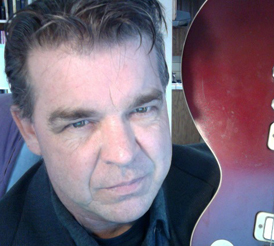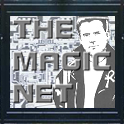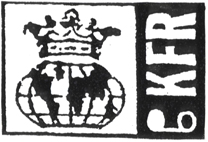|
THE MAGIC INTERVIEW 04-14: MR. LONELY WHISTLE MUSIC... MR. NO PIGEONHOLES... MR. LIVING ARCHIVE... MR. DON CAMPAU |
 |
||||
|
When I first started the label back in the spring of 1987, it was purely as a vehicle for my own output and operated under the same name as the band, Magic Moments At Twilight Time. The story of how it transformed into a global project is probably quite well known now, but as Don Campau was completely interwoven in the philosophical birth of that process, it’s worth a brief recap to the point he became involved: The old label had ceased trading on 11th March 1990, I had completely failed to put a new line up together and had figured it was pretty much game over. However, in the year that followed, as a result of a rather glorious review in a rather glorious zine (The Organ), we’d had a lot of packages from other like minded bands. In one such package, from Nik Hunt (drummer with Mandragora, later with Here & Now, currently taking pictures of spiders), there was a flyer for BBP Records & Tapes, run by one Stephen Parsons, sadly lost to us a while back. Stephen, it turned out, did more than just run BBP, he was also the British wing of KFR (Kentucky Fried Royalty), a global underground music distribution project that was to change my world forever. In Europe, it was the realm of Lord Litter, the American wing was run by one Don Campau…
DC: Hmm, I’m trying to remember who mentioned the idea of KFR to me first. I think it was Stephen Parsons. I believe he had already lined up support with Litter and I actually wasn’t the original USA counterpart. It was a woman named Jennifer ( so sorry I cannot remember her last name right now). She didn’t continue with it long though and I volunteered to take over ( if I recall correctly ). There was also talk of having a South American office and possibly a Japanese one, but neither happened. The idea of KFR was so perfect for all of us, especially me. I already had a label and because of my extensive radio contacts I did a lot of postal communication. The idea was simple: Each office received a master tape and some covers. If anyone ordered a tape it would go out from that country's office . I would copy the tape, fold up the covers and send out to the interested parties. I would keep track of “sales” and then give each artist $1 USA after 5 sales were made. Unfortunately, it never really took off and only lasted a couple of years. In the end, the “royalties” were few and far apart. |
MM:
But what a noble project it was! Now, let’s see, when we first made contact,
you were based in San Jose. She should have just asked you really, you would
simply have said “Why, yes, I do, Dionne, I live there.” But I digress,
which you’ll recall is very unlike me. You’d already been making music for
many moons, but the first of your albums I got to hear was “Mixed Messages”
(later to become M&E 050), a fine selection of underground Americana,
complete with ‘ansafone’ messages linking tracks. I pointed out that we’d
already done that on “Zoen Nostalgia”. However, you assured us you had no
intention of ripping us off, you were actually trying to rip off Dino DiMuro,
so that was fair enough. Perhaps you can fill us in a bit on your musical
career before this point, and what was it that first inspired you to set out
on that journey?
DC:
Good memory on
that point Mick. Dino had been doing phone MM: I wish it was memory, actually it’s research (lots of reading of archive copies of The Mmattrix et al), at my age you struggle to remember where you’ve put your slippers. So, music… DC: I started playing guitar when I was about 16 or 17 in about 1967-8. I had a cheap acoustic and never had lessons. My influences at the time were The Beatles, Stones, The Who, Hendrix, Santana and most psychedelic rock. I was an early fan of Indian music as well and I was using tunings and drone modes early on for improvising. In 1971 my friend Geoff Alexander recommended me for a radio show on KTAO . Everyone at that station was under the influence of the owner, Lorenzo W. Milam, who is considered one of the Fathers Of Community radio in the USA. We were lucky to have him as a teacher and he taught us to question everything and keep our ears and minds open to different forms of expression. All while being extremely sarcastic and suspect of anything “normal”. Geoff and I had a group with our brothers and a couple of friends in San Jose called The Roots Of Madness. This was from 1969 until about 1976. We were influenced greatly by free jazz artists like Albert Ayler and Pharoah Sanders. Other biggies for us were Capt Beefheart and many forms of esoteric ethnic music. The term “world music” did not come into vogue until years later. The Roots released one LP in 1971 from a series of open reel tapes we had recorded on a two track reel to reel machine. You can read more about The Roots Of Madness here: http://www.afana.org/rootsmadness.htm. Strangely, years and years later we were approached by an American label, DeStijl, to re-issue the LP in the original form. Then, I remastered the reels and made CDR albums out of all those too, about 16 full length albums of squawking free jazz, bizarre humor, noise, odd rock, and faux ethnic jamming. This caused a lot of orders back in 2005 when this |
||||
|
|
|||||

.gif)
.gif)
 MM:
Amazed to find that what we had tried on a local level with The Grain, and
nationally with the MMATT label, actually existed on a global scale already,
I had become thoroughly re-enthused and decided to start a newszine called
The Mmattrix. In the very first issue (Summer 1991), there’s an article
about the KFR set up which mentions that I had recently written to you, thus
we have our beginning. So how did you first become involved with KFR and
what about it resonated so much with your personal philosophy that made you
decide to take on the American side of it, especially considering the amount
you already did?
MM:
Amazed to find that what we had tried on a local level with The Grain, and
nationally with the MMATT label, actually existed on a global scale already,
I had become thoroughly re-enthused and decided to start a newszine called
The Mmattrix. In the very first issue (Summer 1991), there’s an article
about the KFR set up which mentions that I had recently written to you, thus
we have our beginning. So how did you first become involved with KFR and
what about it resonated so much with your personal philosophy that made you
decide to take on the American side of it, especially considering the amount
you already did? messages for quite a long time and it was the perfect foil for my “Mixed
Messages” concept.
messages for quite a long time and it was the perfect foil for my “Mixed
Messages” concept.